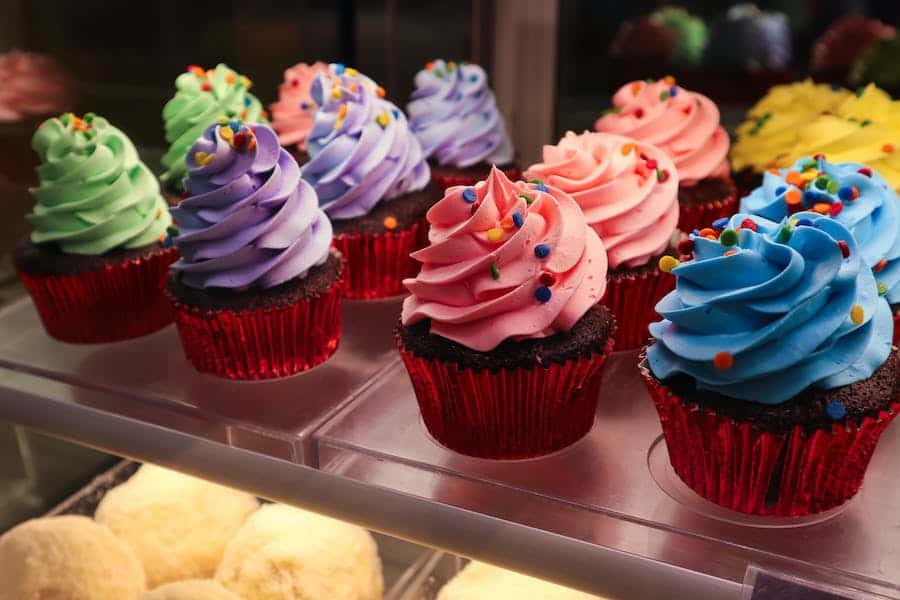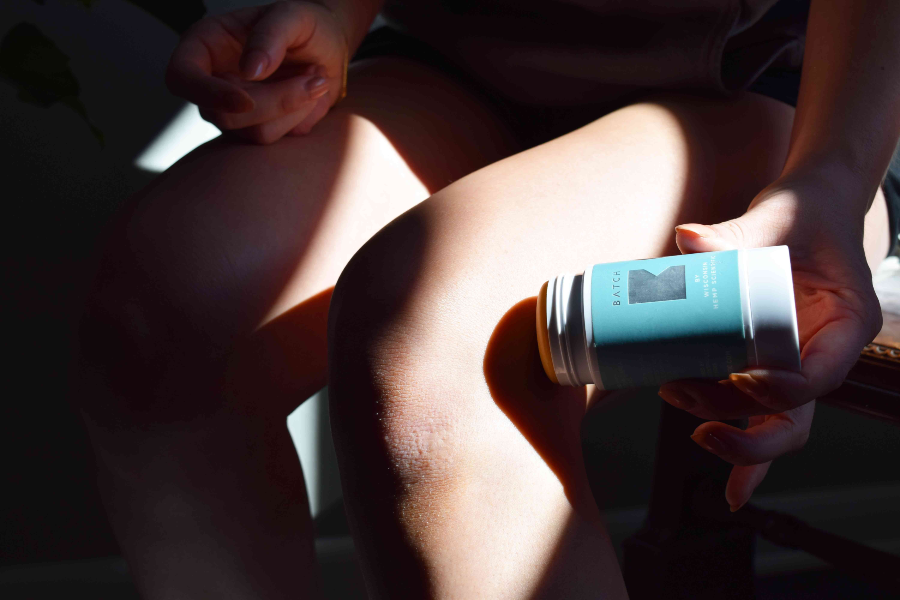Muffins and cupcakes, two delightful baked treats, often find themselves gracing our tables and satisfying our sweet cravings. However, while they share similarities in appearance, these delectable creations are not the same. To the uninitiated, distinguishing between a muffin and a cupcake can be challenging. Is it the frosting, the size, or the taste that sets them apart? In this article, we will embark on a culinary exploration to uncover the subtle yet significant differences between muffins and cupcakes, shedding light on their distinct characteristics and when to choose one over the other. Let’s dive into the world of baking and unravel the mysteries of these beloved pastries.
What Is The Difference Between A Muffin And A Cupcake?
The primary differences between a muffin and a cupcake lie in their sweetness, texture, and purpose. Muffins are typically less sweet, denser, and often served as a breakfast or snack item. Cupcakes, on the other hand, are sweeter, lighter, and adorned with frosting. They are typically considered desserts. The choice between them depends on your preference for sweetness and the time of day you want to enjoy them.
Key Differences Between Muffins And Cupcakes
Muffins and cupcakes may appear similar at first glance, but several key differences set them apart. Here are the main distinctions:
1. Sweetness Level:
Muffins tend to be less sweet than cupcakes. Muffin recipes usually contain less sugar, making them a suitable choice for breakfast or a less sugary snack. In contrast, cupcakes are intentionally sweet, with sugar added to both the batter and frosting to create a delightful dessert.
2. Texture And Density:
Muffins have a denser and heartier texture compared to cupcakes. They often incorporate whole grains or fruits, resulting in a slightly more substantial feel. Cupcakes, on the other hand, are lighter and fluffier due to the addition of more sugar, butter, and sometimes cake flour.
3. Frosting Or Toppings:
One of the most noticeable differences is the presence of frosting or toppings. Cupcakes are typically crowned with rich, sweet frosting, while muffins are usually left unadorned. This frosting disparity significantly contributes to the sweetness contrast between the two treats.
4. Serving Occasions:
Muffins are commonly associated with breakfast or as a convenient, on-the-go snack. They are often served plain or with butter or jam. Cupcakes, on the contrary, are dessert items, often enjoyed on special occasions like birthdays, weddings, or as a sweet indulgence.
5. Mixing Method:
The mixing method used for muffins and cupcakes also varies. Muffin batter is typically stirred until just combined to prevent overmixing, resulting in a coarser texture. In contrast, cupcake batter is often beaten longer to incorporate more air, yielding a lighter, fluffier crumb.
When To Choose Muffins Or Cupcakes?
The choice between muffins and cupcakes depends on various factors, including your taste preferences and the occasion. Here’s when to choose one over the other:
- Breakfast Or Snack: Choose a muffin when you’re looking for a quick and relatively healthier breakfast option or a satisfying snack. Muffins, being less sweet and often containing whole grains or fruits, are a suitable choice for these occasions.
- Dessert Or Celebration: Opt for cupcakes when you want to indulge in a sweet dessert or celebrate a special occasion. Cupcakes, with their sweeter taste and frosting, are perfect for birthdays, weddings, parties, or any event where you want to treat yourself and others.
- Sweet Cravings: If you’re craving something sweet and decadent, cupcakes are the go-to choice. Their rich frosting and sugary flavors make them a delightful dessert to satisfy your sweet tooth.
- On-The-Go Convenience: Muffins are a convenient choice when you’re on the move. They’re often wrapped individually, making them easy to grab and enjoy without the mess associated with cupcakes.
- Dietary Considerations: Consider your dietary preferences and restrictions. If you’re looking for a lower-sugar or healthier option, muffins are a better choice. You can find muffin recipes tailored to specific dietary needs, such as gluten-free or vegan.
- Time Of Day: Muffins are suitable for any time of day, including breakfast, brunch, or an afternoon pick-me-up. Cupcakes, on the other hand, are typically reserved for dessert in the evening or during special events.
How To Make The Perfect Muffin Or Cupcake?
Creating the perfect muffin or cupcake requires attention to detail and some baking finesse. Here’s a step-by-step guide to making both:
Ingredients You’ll Need:
Flour
Sugar
Baking powder
Baking soda
Salt
Eggs
Butter or oil
Milk or buttermilk
Flavorings (vanilla extract, cocoa powder, etc., depending on the recipe)
For Muffins:
- Preheat The Oven: Preheat your oven to the specified temperature in the muffin recipe (usually around 350°F or 180°C).
- Prepare The Muffin Pan: Line your muffin tin with paper liners or grease it to prevent sticking.
- Mix Dry Ingredients: In a mixing bowl, whisk together the flour, sugar, baking powder, baking soda, and salt.
- Mix Wet Ingredients: In another bowl, beat the eggs and then add melted butter or oil, milk, and any flavorings.
- Combine Wet And Dry Ingredients: Pour the wet ingredients into the dry ingredients and gently stir until just combined. Do not overmix; lumps are okay. Overmixing can lead to tough muffins.
- Add Mix-Ins (Optional): If desired, fold in mix-ins such as chocolate chips, nuts, or berries.
- Fill Muffin Cups: Fill each muffin cup about two-thirds full with batter.
- Bake: Bake in the preheated oven for the time specified in your recipe, usually 18-20 minutes, or until a toothpick inserted into the center comes out clean.
- Cool: Allow the muffins to cool in the pan for a few minutes, then transfer them to a wire rack to cool completely.
For Cupcakes:
- Preheat The Oven: Preheat your oven to the specified temperature in the cupcake recipe (often 350°F or 180°C).
- Prepare Cupcake Liners: Place paper liners in your cupcake tin.
- Mix Dry Ingredients: In a mixing bowl, whisk together the flour, sugar, baking powder, baking soda, and salt.
- Mix Wet Ingredients: In another bowl, beat the eggs and add melted butter or oil, milk, and any flavorings.
- Combine Wet And Dry Ingredients: Gradually add the wet mixture to the dry ingredients and beat until well combined. Be careful not to overmix.
- Fill Cupcake Liners: Fill each cupcake liner about two-thirds full with batter.
- Bake: Bake in the preheated oven for the time specified in your cupcake recipe, usually 18-20 minutes, or until a toothpick inserted into the center comes out clean.
- Cool: Allow the cupcakes to cool in the pan for a few minutes, then transfer them to a wire rack to cool completely.
Conclusion
In conclusion, while muffins and cupcakes may share some similarities, their differences in sweetness, texture, and intended purpose are what set them apart. Whether you’re seeking a wholesome breakfast or an indulgent dessert, understanding these distinctions will help you make the perfect choice. Whichever you prefer, muffins and cupcakes remain beloved treats, each offering its unique charm in the world of baking and culinary delights.
FAQ’s
Are Muffins Healthier Than Cupcakes?
Yes, muffins are generally considered healthier than cupcakes due to their lower sugar content and potential for incorporating healthier ingredients like whole grains and fruits.
What’s The Main Difference Between A Muffin And A Cupcake?
The primary difference is sweetness. Muffins are less sweet and denser, while cupcakes are sweeter, lighter, and topped with frosting.
Can I Use The Same Batter For Muffins And Cupcakes?
While the base batter is similar, they require different mixing methods and baking times to achieve the desired texture and taste.
Why Do Cupcakes Have Frosting But Not Muffins?
Cupcakes are meant to be a dessert, and frosting adds sweetness and visual appeal. Muffins are typically a breakfast or snack item, so they are often served plain.
Can I Convert A Cupcake Recipe Into A Muffin Recipe Or Vice Versa?
With some adjustments, it’s possible to adapt a recipe, but be mindful of sugar levels and mixing methods to achieve the desired result.








